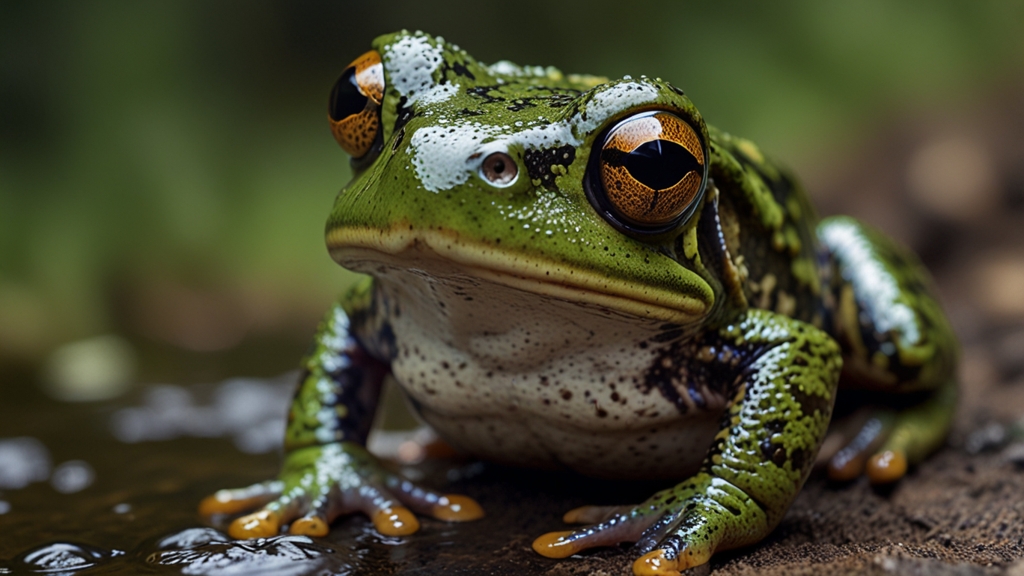Unseen Inventions That Could Transform the Environment
The environmental challenges that our planet faces are immense and varied. From climate change to pollution and deforestation, these issues require innovative solutions that go beyond the current scope of technology. While there are many well-known green technologies such as solar panels and electric vehicles, there are also lesser-known inventions that hold significant promise for transforming the environment.
AirCarbon: Capturing Carbon from the Air
Carbon capture has often been touted as a crucial technology for addressing climate change. However, a significant amount of research and development is still required to make it financially viable and universally implemented. One promising invention in this sphere is AirCarbon, a material that captures carbon from the air and converts it into usable materials such as plastic substitutes.
"AirCarbon represents a revolution in how industries might tackle the carbon emissions problem. By turning pollution into products, we can not only reduce the carbon in the atmosphere but also reduce reliance on fossil-fuel-based plastics."
Developed by Newlight Technologies, AirCarbon is a result of over a decade of research. Not only does it help in reducing carbon levels, but it also offers a sustainable alternative to conventional plastics, which are a significant contributor to environmental degradation.
Graphene Water Filtration
Water shortages and contamination are pressing global issues. Traditional water filtration methods, although effective, still have limitations. Enter graphene—a single layer of carbon atoms with remarkable properties. Researchers have developed graphene-based water filters that can purify water faster and more efficiently than existing solutions.
Graphene's structure allows it to filter out the smallest contaminants, including viruses and heavy metals, at an unprecedented rate. This could transform water purification in areas that suffer from severe water pollution and where clean drinking water is scarce.
Solar-paved Roads
Solar energy is a well-established renewable resource, but what if the very ground we walk and drive on could be harnessed to capture solar energy? Solar-paved roads are an innovative concept aiming to turn roadways into power generators. These roads are made of durable solar panels topped with a layer of tempered glass, designed to withstand the weight and pressure of traffic while capturing solar energy.
"Imagine a future where the roads beneath our feet and tires generate electricity for homes and cities, while also reducing our reliance on fossil fuels. Solar-paved roads present a dual functionality that could significantly shift the landscape of renewable energy."
This technology not only broadens renewable energy sources but also offers a dual purpose for infrastructure, making it an efficient and space-saving solution. Pilot projects are already underway in countries like the Netherlands and the United States, and initial results are promising.
Vertical Farming
Agriculture is responsible for a significant portion of deforestation and greenhouse gas emissions. Vertical farming is an invention that could potentially revolutionize how we grow food. By growing crops in stacked layers within controlled environments, vertical farming drastically reduces the need for deforestation and minimizes water and land use.
These farms use LED lights and advanced hydroponics systems, allowing for year-round production regardless of weather and soil conditions. This not only increases yield but also brings farming into urban areas, reducing the carbon footprint associated with transporting food over long distances.
Bio-plastics From Waste
Plastic waste is one of the most pervasive environmental pollutants. However, recent advancements have led to the development of bio-plastics made from agricultural waste products such as corn husks, banana peels, and even algae.
These bio-plastics are designed to biodegrade much faster than traditional plastics, reducing their environmental impact. Moreover, by utilizing waste products, this technology adds an element of circularity, turning what would otherwise be waste into valuable resources.
Conclusion
While mainstream green technologies continue to evolve and improve, these unseen inventions offer a glimpse into the future of environmental transformation. From capturing carbon and purifying water to generating solar energy and revolutionizing agriculture, the potential of these innovations is vast. As these technologies develop and gain adoption, they could play a crucial role in addressing some of the most pressing environmental challenges of our time.









